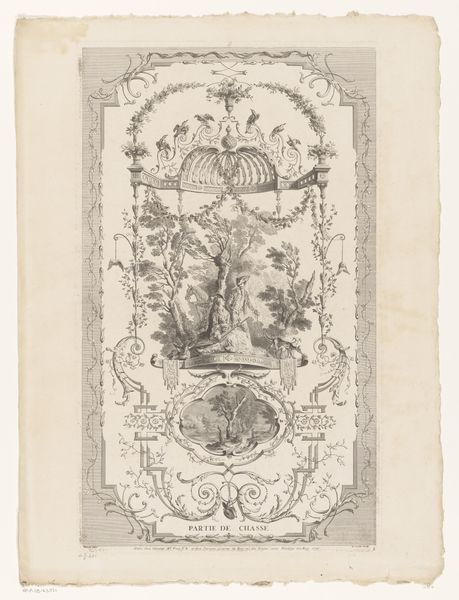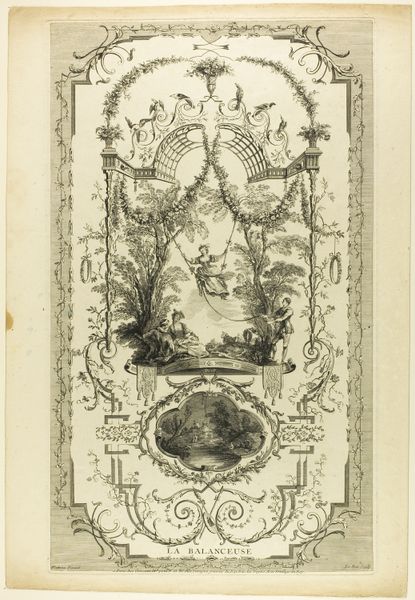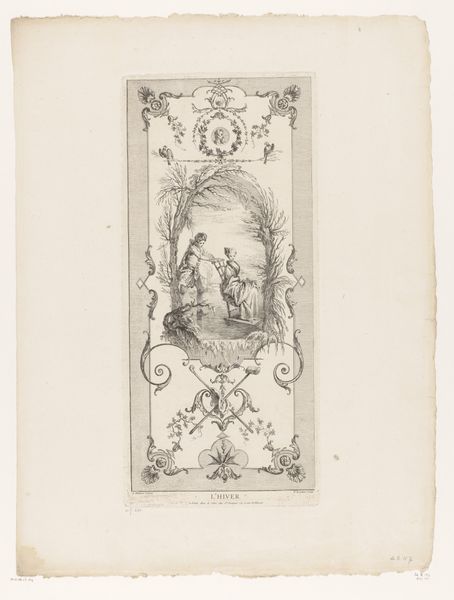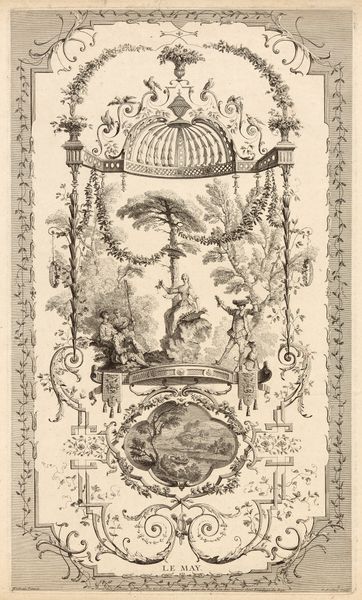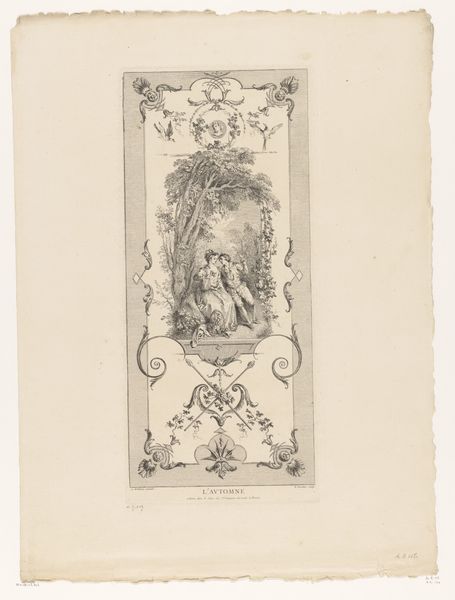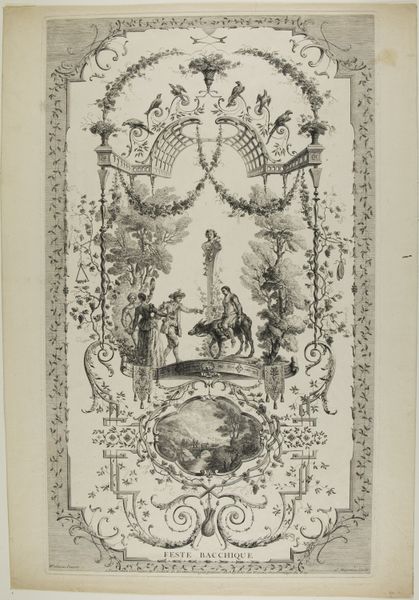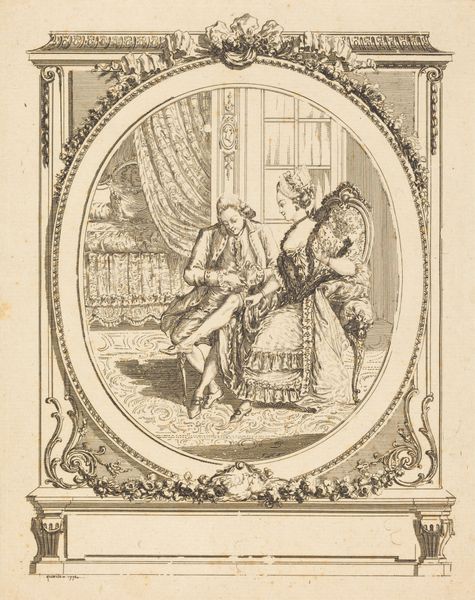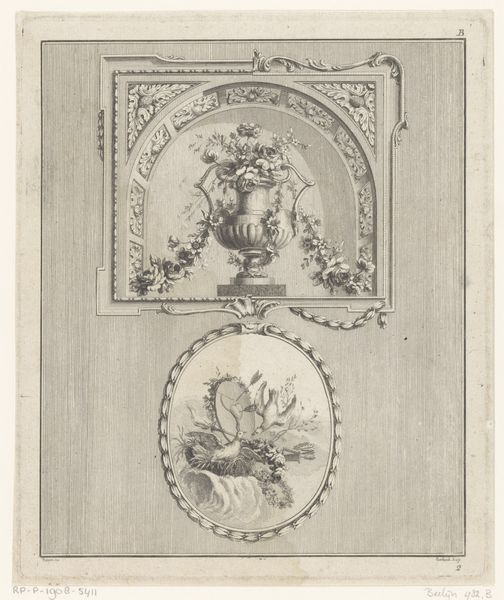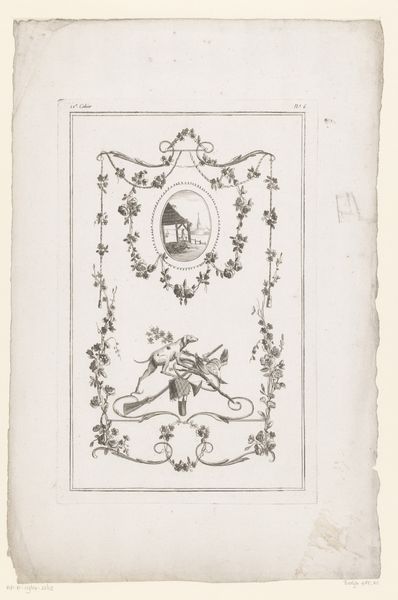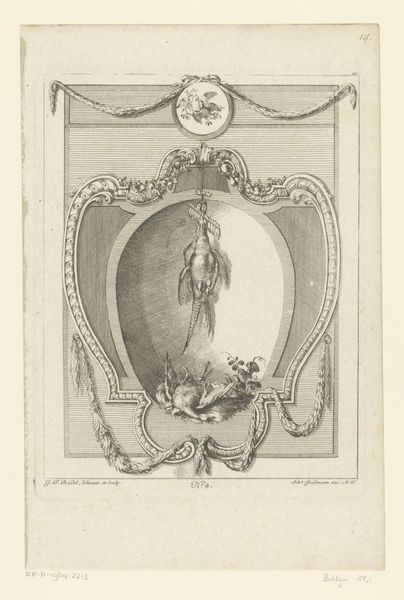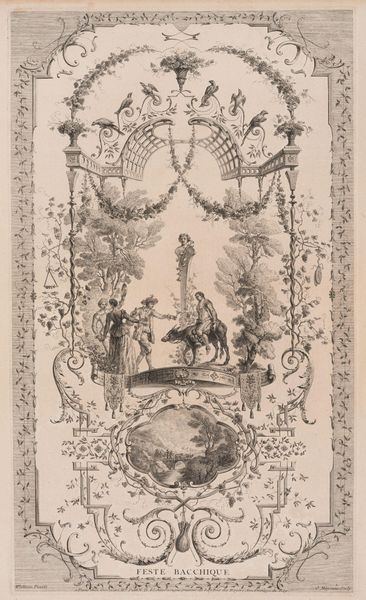
drawing, print, paper, watercolor, pencil
#
portrait
#
drawing
# print
#
landscape
#
figuration
#
paper
#
form
#
personal sketchbook
#
watercolor
#
coloured pencil
#
pencil
#
line
#
genre-painting
#
academic-art
#
watercolor
#
realism
Copyright: Public Domain
Curator: Here we have an interesting piece from the 19th century titled "Overmantel Picture with Diana," currently residing here at the Met. The anonymous artist crafted it using pencil, watercolor, and colored pencil on paper, also utilizing print techniques to give the work a very specific character. Editor: My initial impression is that of something incomplete, or perhaps deliberately evocative rather than precise. There's a ghostly quality to Diana and her dog against this sketched-in landscape. And is that meant to be the moon? It feels less like a formal portrait and more like a fleeting impression of a mythic scene. Curator: It certainly possesses an air of spontaneity. Considering it's meant as an overmantel picture, this imprecision might be intentional. Overmantels were often part of a larger decorative scheme, contributing to the ambiance rather than demanding singular attention. Think of them almost as ancestors of today's mood boards; what symbolic gestures do you interpret from the subject and scene here? Editor: Well, Diana herself is laden with symbolism; as the Roman goddess of the hunt, the moon, and wilderness, she embodies a powerful feminine connection to nature. Representing her alongside the celestial moon—an orb associated since the Upper Paleolithic with renewal—deepens this, presenting the cultural memory and continuity tied to her image throughout time. The sketch like rendition of her might hint that she remains a symbol even at that time and into ours. Curator: Interesting! Now, knowing that such pieces also reflect social tastes of their time, what’s your perspective on this piece given its socio-cultural context of display within the Metropolitan Museum? What does it mean to encounter something that could be deemed ‘genre-painting’ like this one in such institutionalized setting? Editor: Displaying such a personal and ephemeral sketch elevates it to something more monumental, prompting questions about art, the social hierarchies encoded in artistic forms, and power structures in place. Highlighting this as part of a larger collection encourages us to view artistic creation from different strata; what we deem appropriate versus the individual work; who holds what values and determines art’s legacy over time. Curator: Yes, its placement within a museum inherently reshapes the artwork’s narrative and extends its influence further, prompting questions about who it represents in its original display setting and how the meaning now morphs and takes root. It offers an intersection of symbol, identity, and societal gaze, doesn’t it? Editor: Indeed! It speaks volumes about how art constantly shifts and transforms, accumulating new layers and prompting critical reflection. It prompts further discussions of social value over a piece, too. It's a remarkable instance of visual representation that transcends its origins.
Comments
No comments
Be the first to comment and join the conversation on the ultimate creative platform.
